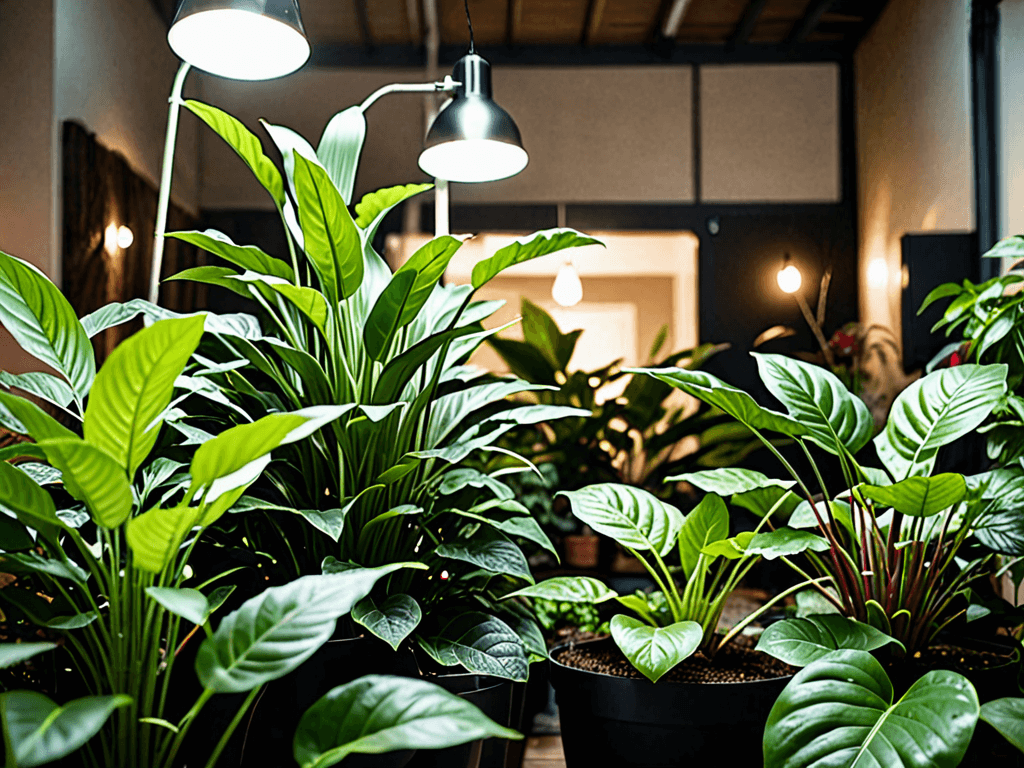Indoor Gardening is transforming urban living spaces into lush green sanctuaries.
By cultivating an indoor oasis, you can enjoy the benefits of nature no matter where you are.
This guide takes you through essential steps including choosing the right plants, equipping yourself with the right tools, and mastering essential care techniques.
Dive into the world of Indoor Gardening and discover how to create a vibrant and thriving garden in the comfort of your home.
Choosing the Right Plants
Selecting appropriate plants for your indoor garden is crucial for creating a thriving indoor environment. Start by considering the light conditions in your space; low-light plants, like snake plants or pothos, thrive without direct sunlight. If you have bright windows, explore plants like succulents and herbs, which require ample sunlight.
Consider the maintenance levels you can handle; for a low-maintenance option, choose plants that require minimal watering and care. Additionally, think about aesthetics and space; tall plants or those with cascading leaves can add wonderful vertical elements.
Ultimately, the best plants are those suited to your specific conditions and personal preferences, enhancing your indoor garden journey.
Essential Indoor Gardening Tools
To create a successful indoor garden, it’s essential to have the right tools at your disposal.
Begin with a quality pair of gardening gloves to protect your hands from soil and chemicals.
A sturdy trowel is necessary for planting and soil manipulation, while pruning shears help to keep your plants healthy and well-shaped.
Invest in watering cans with narrow spouts for precise watering, minimizing overwatering risks.
Humidity trays can be used to create an optimal environment for moisture-loving plants.
Lighting is crucial; consider using LED grow lights that mimic sunlight if natural light is scarce.
Don’t forget a good pot with drainage holes to prevent root rot.
These tools will set you up for a flourishing indoor gardening experience.
Lighting Tips for Indoor Gardens
Providing adequate lighting for your indoor garden is key to plant health and growth.
Natural light is best, so placing plants near windows is ideal.
However, if that’s not feasible, consider using grow lights to supplement.
Opt for LED grow lights, as they are energy-efficient and mimic sunlight effectively.
It’s crucial to understand the specific light requirements of your plants; some need bright, direct light, while others thrive in indirect or low light.
Adjust the distance between lights and plants to avoid overheating or burning leaves.
Timers can be useful to ensure plants receive consistent light daily.
With the right lighting setup, you can nurture a flourishing indoor garden year-round.
Watering Best Practices
Mastering the art of watering is essential for indoor gardening success. The needs of plants differ, so it is important to understand each type of plant’s requirements.
Overwatering is a common mistake that can lead to root rot, so always check if the top inch of soil is dry before adding more water.
Use a small watering can with a narrow spout for precision, preventing spills and excess moisture.
Consistency is key; maintaining a regular watering schedule helps prevent stress on your plants.
Collecting rainwater or using distilled water can benefit your plants by reducing mineral buildup seen with tap water.
Knowing when and how often to water ensures your indoor garden thrives.
Soil and Fertilization Basics
Choosing the right soil is crucial for indoor gardening. Indoor plants typically thrive in loose, well-draining potting mixes. Avoid garden soil as it can be too heavy and compact for potted plants. Look for a potting mix rich in organic matter, which aids in moisture retention and nutrient supply. Adding perlite or sand can improve drainage.
Fertilization is also key; plants in pots need regular feeding due to nutrient depletion over time. Use a balanced liquid fertilizer every few weeks during the growing season. Always follow package instructions to avoid over-fertilizing, which can harm plants. Organic fertilizers are a gentler option, promoting healthy soil biology and plant growth.
Pest Control for Indoor Gardens
Managing pests effectively is crucial for maintaining healthy indoor plants. Start by inspecting your plants regularly for signs of pests like aphids, spider mites, and scale. Early detection can prevent infestations.
Use a damp cloth to wipe pests off leaves, or rinse plants with a gentle spray of water. Introducing natural predators like ladybugs can help control pest populations.Neem oil and insecticidal soaps are safe treatments for most indoor plants. Apply them according to instructions for best results.
Keeping plants healthy through proper care and not overwatering can also reduce plant stress, making them less susceptible to pests.
Seasonal Indoor Gardening Tips
Adapting your indoor gardening practices for each season can help keep your plants vibrant and healthy year-round.
In the winter, shorter days mean less light, so consider moving plants closer to windows or using grow lights to compensate.
Reducing water and fertilizers is crucial since plant growth slows down.
During spring, focus on repotting and refreshing the soil, giving plants a nutrient boost for the growing season.
As summer approaches, increased sunlight and temperatures mean more frequent watering and humidity control to prevent drying.
In the fall, gradually reduce watering and prepare plants for less daylight.
These seasonal adjustments ensure your indoor garden thrives in any condition.
Decorative Ideas for Indoor Gardens
Enhancing the beauty of your indoor garden can be achieved with creative decorative ideas. Start by choosing decorative pots and containers that complement your home decor.
Consider using hanging planters to add vertical interest and save space. Adding shelves or plant stands can create levels and depth in your arrangement, drawing the eye.
Incorporate decorative stones or pebbles on the soil surface for a polished look. Fairy lights or lanterns can be introduced to bring a cozy ambiance, especially in the evening.
Mixing plant types, such as leafy greens with flowering plants, adds variety and texture to your indoor garden space.
Conclusion: Embrace the Joy of Indoor Gardening
Indoor gardening offers a fulfilling hobby and numerous benefits, from beautifying your home to purifying the air.
By selecting the right plants and providing them with proper care, you can transform your living space into a thriving green sanctuary.
Utilize tools and techniques like optimal lighting and seasonal adjustments to ensure your indoor garden flourishes.
Whether for aesthetic pleasure or environmental stasis, indoor gardening is a timeless practice that enhances your well-being and interior space.
Embrace this journey and discover the serene joy your own indoor garden can bring.
FAQ – Frequently Asked Questions about Indoor Gardening
What are the best plants for indoor gardening?
Plants like pothos, snake plants, and peace lilies are excellent choices for indoor gardening due to their low maintenance and low light requirements.
How often should I water my indoor plants?
Watering frequency depends on the plant species and environment, but generally, you should water when the top inch of soil is dry.
What kind of lighting do indoor plants need?
Most indoor plants thrive with indirect sunlight. For low-light areas, consider using LED grow lights to supplement natural light.
How can I prevent pests in my indoor garden?
Regularly inspect your plants for signs of pests and use natural remedies like neem oil or introduce beneficial insects like ladybugs.
How can I decorate my indoor garden space?
Use decorative pots, plant stands, and shelves to create layers. Add elements like stones and fairy lights for enhanced aesthetics.
Do indoor plants help purify the air?
Yes, many indoor plants can improve air quality by filtering toxins and releasing oxygen.


